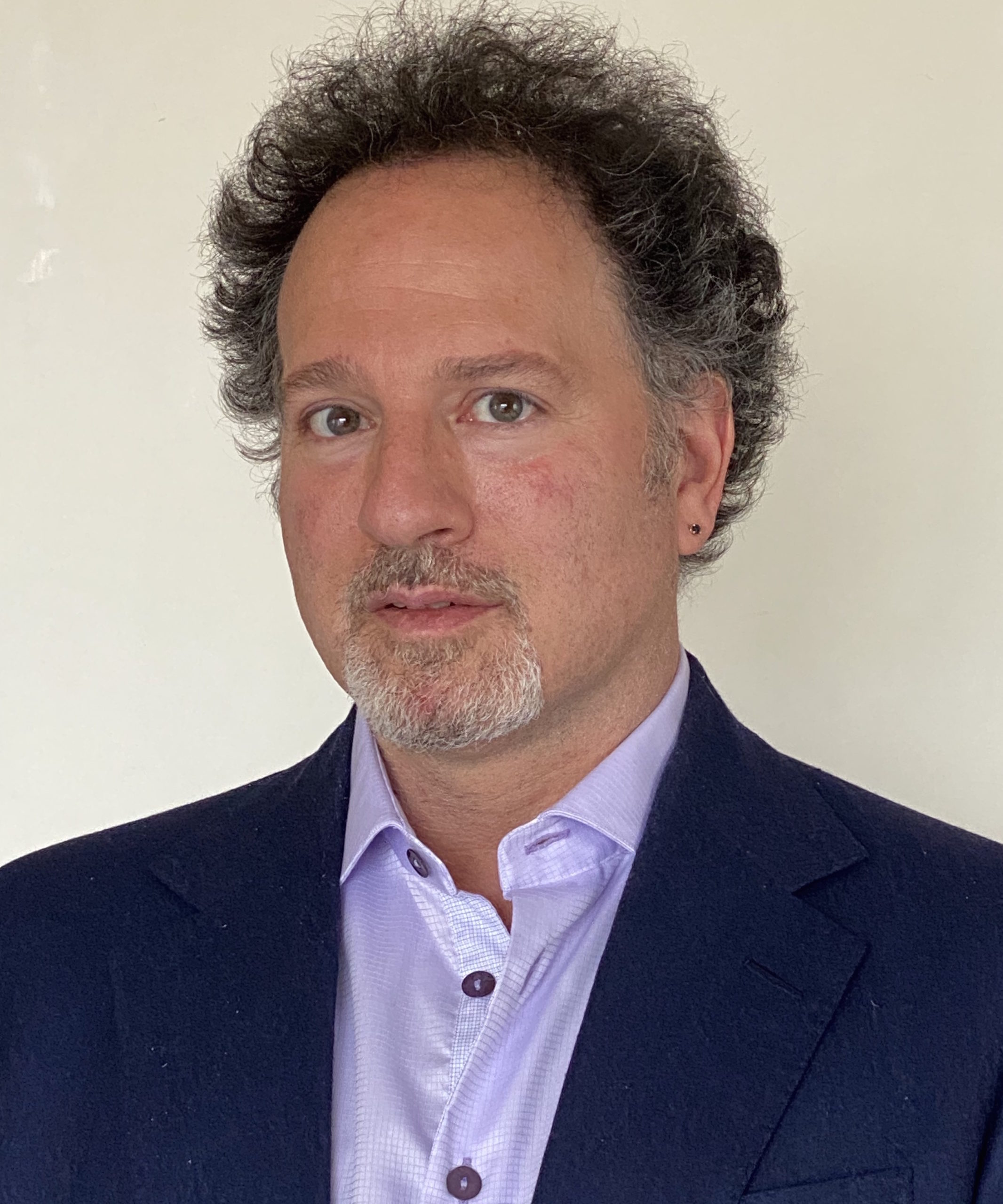Volcanoes are erupting in The Philippines, but on-fire Australia received some welcome rain. The Iran war cries have been called off and The Donald’s military powers are about to be hamstrung by the Senate. Meanwhile, his impeachment trial is starting, and we’re all on Twitter for a front-row seat.

The Progress Report: All Aboard the 3D Express!
Featuring Zachary Karabell and Emma Varvaloucas
In this week’s Progress Report, Zachary Karabell and Emma Varvaloucas highlight some truly global good news—stories that are too often buried under the avalanche of daily doomscrolling.
Emma brings data from the World Health Organization showing that maternal mortality has dropped by over 40% since 2000, with real success stories in sub-Saharan Africa. Then they shift to Japan, where the world’s first 3D printed train station was built and installed in just a week. Also, electric buses are quietly transforming city transit worldwide, from the Netherlands to Nigeria, with China leading the charge.
Prefer to read? Check out the Audio Transcript
Although the transcription is largely accurate, in some cases it may be incomplete or inaccurate due to inaudible passages or transcription software errors.
Zachary Karabell: What could go right. I’m Zachary Karabell, the founder of the Progress Network. Joined as always by Emma Varvaloucas, the Executive Director of The Progress Network, and this is our weekly progress report where we look at news of the world that you likely will have missed. Emma, what have you found for us this week?
Emma Varvaloucas: We’re gonna start with a strong statement from the World Health Organization, which is that women are more likely than ever to survive childbirth, pregnancy, and childbirth. Who could argue with that? You actually can. We’re gonna get there eventually. Who? But we’re gonna do the, we’re gonna do the good news first.
Between 2020 23, the global maternal mortality rate dropped by more than 40%. In absolute numbers. It nearly have so nearly half a million maternal deaths in 2000, and that was down to about a quarter million in 2023. It is very few countries in the world where trends are going in the wrong direction. We would be delighted to know that the United States is one of them.
But again, we’ve discussed on here, we’ve discussed the maternal mortality data in the US and whether or not it’s, it’s accurate, but in basically every region in the globe, your odds of surviving pregnancy and childbirth are, are getting better and better. The usual USAID caveats will apply here and some, and.
Some other caveats that people maybe are not used to. Progress has been stalling since about 2016, so not sure what the data’s gonna look like another 20 years from now if it’s going to be nearly as successful. American tax dollars are very much so at play in this success. Of course, we can’t say, you know, to what extent or what percentage but with that money being cut off, like it’s certainly a headwind for.
Continued progress, but still, I mean, some of these countries, you know, they have cut their maternal mortality rate by just massive, massive amounts and that’s very impressive and they deserve some applause.
Zachary Karabell: Indeed. And, and some of this will certainly continue just with cleaner water, more antibiotics, better medicine supply, and yes, the.
Absence of USAID billions is going to negatively impact some of the poorest countries, many of which are indeed in Sub-Saharan Africa. That being said, there is more robust healthcare, more robust health systems around the world than there ever have been. I suppose the only thing to think about as one looks at absolute numbers is there, they’re also just fewer births globally, so there are gonna be fewer absolute numbers of, of maternal mortality, but.
A relative sense, the percentages are going down no matter how you, no matter how you slice it. And look, we, we will see, I think in many parts of the world, from what I understand, there’s just much more robust public health services as governments become more competent, as tax bases become more robust.
You know, governments develop greater capacity when they can. Collect more taxes, which allows them to pay for public health services. And there’s a lot of evidence of that, certainly throughout East Asia and Latin America, let alone Europe, where that’s been true all along.
Emma Varvaloucas: I will say one thing about the birth rates, which is that a lot of the really big maternal mortality numbers are in Sub-Saharan Africa and birth are not declining there.
So it’s actually one of those things where, yes, birds are declining in a lot of developed countries, but they aren’t in developing countries and. Maternal death has still been cut down there, so yay, yay for them.
Zachary Karabell: Yeah. Well, actually, even in Sub-Saharan Africa, if you look at Nigeria and Ghana and some of these other places the rate of population increase is, is declining, slowing.
Mm-hmm. There’s still, there still is population increase. Unlike East Asia where there’s absolute population contraction, or rather, there will be, right now there’s aging populations more than, there’s absolute contraction, but there will be in the next 10 years. But even in these countries where there had been six, seven, eight births per woman, right?
Those numbers have come down to four or five, sometimes even three, and and including in Nigeria, which had been, everyone was always pointing to of like, oh, Nigeria’s gonna have 500 million people by 20 50, 20 60. And those numbers now seem much higher than will be the case because birth rates have come down so sharply, including in places like Bangladesh.
Another place that had been looked at is. High population growth. So if you’re Elon Musk, negative population is a negative thing. I happen to think fewer people is likely to take some of the strains off of multiple societies and multiple systems, but that is another issue we can deal with on another episode.
Emma Varvaloucas: The next time that Elon comes onto the Walka go Right ball, guess yes. We’ll be sure to discuss this with him
Zachary Karabell: soon. He soon may be out of his government job, so he should have ample opportunity to come on the What Could Go Right podcast.
Emma Varvaloucas: That’s how I’m planning to celebrate my July 4th since apparently doge is gonna be shutting down in the next two to three months, around July I am.
Cool. I I thought about that in advance.
Zachary Karabell: Cir circled on your calendar, doge day or something like that.
Emma Varvaloucas: Yes. The end of Doge day. Yeah. Anyway, moving on. Let’s talk about Japan. Doing Japan like things. They have built the world’s first 3D printed train station.
Zachary Karabell: Of course they have,
Emma Varvaloucas: of which of course they have, you know, don’t think of like some massive transit hub let’s say in Amsterdam or something like that.
That’s not the situation. Or Shibuya. Right. It is a, a pretty small train station. I think it’s like a hundred square feet. It’s in a rural area of Japan, but it’s still pretty cool. They, it took them about a week to print all of the parts and to reinforce them with concrete, I believe, and then they shipped that all.
Over to this area in rural Japan. And essentially, instead of taking months to like, try to do the construction wet without interrupting the, the train schedules, they did it in about six hours overnight. So they just, wow. Put it all up. It’s not functioning yet. They need to put in like, the ticket machines and, you know, things like that.
Little details a re mall, shall we say, but it’s going to be up and running soon. The New York Times is a great feature on it with lots of photos and videos and it’s, it’s very cool.
Zachary Karabell: That’s wild. A 3D printed train station. I wish we could do that for New York City. Subways just, you know, overnight, we’ll just put it in a subway station on hundred and 35th Street on Lennox Avenue because, just ’cause we can just ’cause.
Not there yet, but that, that is pretty extraordinary. And I think augers, you know, we, we’ve talked a bit about like what the future of manufacturing’s gonna be. You know, there’s a lot of talk of, for all this current maelstrom of reshoring or whether that’s gonna happen. There’s a lot of people who have been saying, irrespective of whatever these efforts are, that by, by the mid 21st century, you’re gonna have a lot of just local production done in 3D printing, which will obviate some of the need for.
The, the trade of certain goods. I mean, we, we, we can’t yet make matter. It’s not like the Star Trek, whatever those things are, they, you know, tell them to make food. And it does. Like we can’t make uranium or we can’t make rare earths yet, but we can certainly change the way we produce things in a really intensely dramatic fashion.
So that’s very cool.
Emma Varvaloucas: Yeah, we can’t, we can’t produce rare earths, but AI is helping us identify spots where we didn’t know critical minerals were. So that’s kind of right.
Zachary Karabell: That’s cool too,
Emma Varvaloucas: heading in that direction. I wanted to add too, I forgot to say this when I was talking about maternal mortality in the United Kingdom, the, the first woman that has undergone a a womb transplant has given birth.
This is also really interesting. About 25 years of pioneering medical research brought us to this moment. Yeah. She has a five week year old baby called Amy Isabelle, and her womb was donated to her by her sister.
Zachary Karabell: Ooh, that’s intense. Wild.
Emma Varvaloucas: Wild, huh? That is real family love. You know what I’m saying? Wow.
Zachary Karabell: Thereally, her sister had no further use for it. I mean, I’m assuming.
Emma Varvaloucas: It was actually taken from her in the dead of night by the Japanese train station printers. No, it, her sister’s older. She’s in her forties and she already had two kids, so I’m presuming that she was done with it, so to speak.
Zachary Karabell: You remember that old, that old bad joke.
What’s the best thing about being a test tube baby?
Emma Varvaloucas: No.
Zachary Karabell: Womb with a view.
Emma Varvaloucas: I didn’t know. I did not. I didn’t, that was not on my radar.
Zachary Karabell: Okay, good. All right on that, on that dad joke note. Let’s move on to the next. We’re gonna move on to the next item.
Emma Varvaloucas: So I think it was last week that I was talking about electrifying construction sites. And I’m sorry, but we’re gonna talk about electrifying something else today.
’cause I’m just, I’m in the Netherlands. I’m sorry. I am on this kick of like enjoying everything, being electrified. So. I’m gonna talk about electric buses in the Netherlands where I am. They’re one of the leaders in the European Union. All new city buses are now electric along with Finland and Iceland.
But before we get into like, oh, it’s the usual people doing the usual climate thing, actually electric buses are gaining ground in a lot of places all over the world. People probably know about China. I think it’s 80% of their public bus fleet is now either battery electric or hydrogen fuel. Sell buses, and they’re also just manufacturing tons of ebus on the Jeep that are now all over Latin America.
Both Chile and Columbia are aiming for all new bus sales to be electric by 2035. Both of those capitals as well as Sao Paolo and Brazil and Keto and Ecuador, they already have bus fleets that are in the thousands, which is cool.
Zachary Karabell: You know, there was some talk of putting artificial noise on. Electric buses because one of the only downsides of electrifying your bus fleet in cities is they’re so quiet that there was somewhat more accidents, like with bikers and others.
’cause you couldn’t, you couldn’t hear the bus coming up.
Emma Varvaloucas: Yeah. I think I mentioned, a couple weeks ago on this podcast that I was biking recently in the Netherlands, and I didn’t hear the bus like coming up behind me until it had basically passed me, which of course is not an issue here because like there’s separate bike lanes that are completely safe.
But if you’re not in that kind of environment, and most people outside of the Netherlands are not, I could definitely, definitely see needing to be very careful around the ve these vehicles, you can’t hear them. You, you cannot hear them.
Zachary Karabell: So it’s so eerie the first few times you’re like, whoa, that’s a very large object making no noise.
Emma Varvaloucas: Yeah, exactly. But they’re cool. Like I love charging my phone on them. It’s really convenient. I saw one like top up at a bus depot the other day and the battery just like pops out of the roof and connects to overhead electricity. And it’s not how they do like the full recharging, but when they just need like a little extra juice in the middle of their run, they just do that.
It was very cool. But anyway, yeah, electric buses all over the place. India’s also looking to expand their fleets. Delhi just announced a few days ago actually, that they’re gonna transition into electric buses and Mumbai is trying to go all electric by 2027. Jakarta now has 300 e buses in their fleet.
They’re trying to go all electric by 2030. Seems unlikely, but they are making a push for it. And even some capitals in Africa. So, Kigali and Rwanda. Just received their first batch of ebus, or actually they’re about to receive their first batch of ebus in May, and Cape Town and South Africa is also getting their first batch.
So both of those places are going to have a little bit over a hundred EBUS by the end of this year, so.
Zachary Karabell: Wow.
Emma Varvaloucas: Yeah.
Zachary Karabell: Cool.
Emma Varvaloucas: They’re coming.
Zachary Karabell: They’re coming. They’re coming. So please tune in to our longer form interview podcast in addition to this progress report. Thank you for listening. As always, send us your stories.
If you have stories that you think we should highlight that we have not noticed. They can make their way into the newsletter, into the podcast. We will credit you accordingly. There’s a email @theprogressnetwork.org website and probably can do it through Instagram messaging, multiple ways of reaching us.
I wanna thank you for listening. Thank you to The Podglomerate for producing. Thank you to the peeps at The Progress Network for. Dredging up such good news and thanks to Emma for co-hosting and we’ll be back with you next week.
Emma Varvaloucas: Thanks everyone for listening.
Meet the Hosts

Zachary Karabell

Emma Varvaloucas

